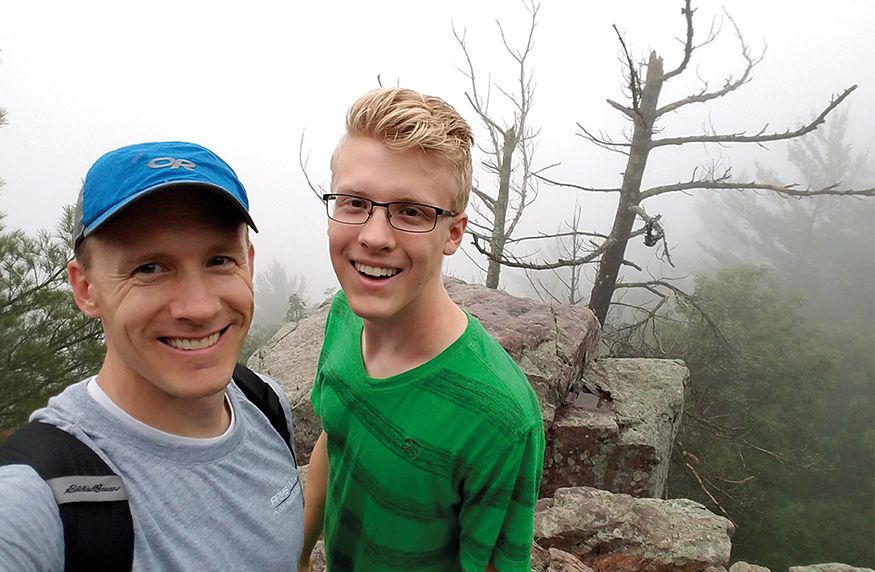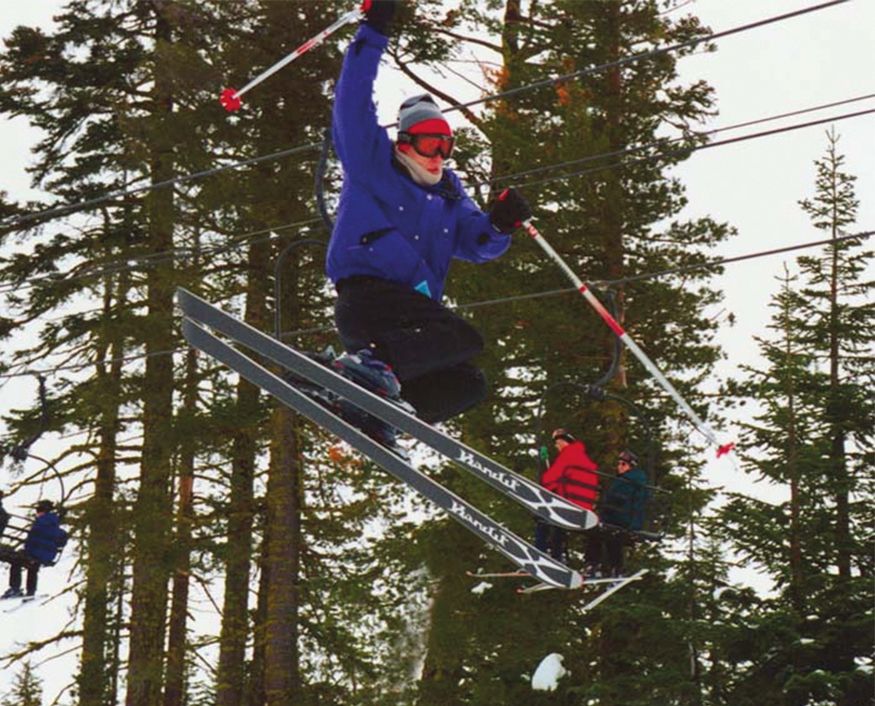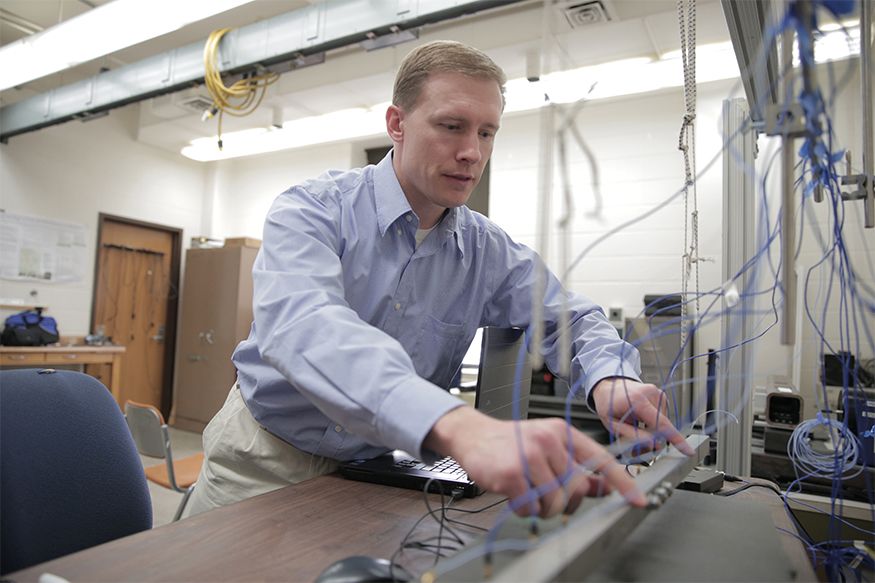Why do you do what you do?
I want to make a difference for people and my job gives me the perfect opportunity to do just that. In my research programme, I want to create technologies that help engineers solve challenging new problems, do things that have never been done before, or understand things that they previously couldn’t understand, such as non-linear vibration or rotating machinery. I like teaching because I get to interact with students when they are at a crossroads in their lives, deciding what they will be and what contribution they will make to the world. I want to inspire them to aim higher – to tackle difficult concepts, learn new things, and be good people.
“I like teaching because I get to interact with students when they are at a crossroads in their lives, deciding what they will be and what contribution they will make to the world.” Matt Allen Associate Professor, Engineering Physics Department, University of Wisconsin 
What are the unique challenges you face in your work?
Trying to solve extremely difficult problems in non-linear dynamics, problems that others have worked on for years and not solved, by bringing together new methods to tackle these problems.
Matt Allen
Company and Job Title: Associate Professor, Engineering Physics Department, University of Wisconsin
Location: Madison
Education:
2001 – 2005: PhD/MS in Mechanical Engineering, Georgia Institute of Technology
1994 – 1995,1998 – 2001: BS in Mechanical Engineering: Magna Cum Laude, Brigham Young University
Previous Jobs
2005 – 2006: Postdoctoral Appointee, Sandia National Laboratories
2000 – 2001: Patterned fibre composites/New Revolution Golf, carbon fibre composite test and design engineer.

What are the most challenging things about what you do?
Research is extremely difficult. We are competing with brilliant people all over the world to be the first to solve hard problems. But when we succeed it is really rewarding. For example, I began working on non-linearities due to bolted joints 10 years ago. We would try to simulate basic finite element models with bolted joints and the computations took a long time, even on a computer cluster. When the simulations were finally done, we found that the response looked a lot like that of a linear system. Now, 10 years later, we have methods that exploit the quasi-linearity of these systems to estimate the dynamic response in fractions of a second. We can now thoroughly probe these models to understand how the joints may affect a structure.
Similarly, in 2006, we began to revisit substructuring methods that had been proposed since the 1960s as a way to experimentally model substructures and combine experimental models with finite element models. We found a new way of coupling subcomponents that made them much more robust to measurement errors and allowed us to couple subcomponents even when the interface between them was continuous.
This is now called the transmission simulator method and is beginning to be used by researchers all over the US and Europe.
What is your greatest achievement and why?
Perhaps the transmission simulator method mentioned above – it has had the broadest impact so far on the community. The method of “quasi-static modal analysis” (mentioned above for joints) is also becoming significant.
But the highest satisfaction comes from my interactions with students and seeing them go on to do great things. That isn’t really my achievement but theirs.
Any personal ambitions?
Yes, tons! There is still so little we can do to experimentally probe and understand non-linear systems. There are some good methods, but all are limited to certain types of systems and none is all that effective for the common non-linearities that we encounter in industry. The same could be said for simulation of non-linear systems. Methods exist but they are slow (computationally expensive) and don’t provide the insight that we’d like.
What are the best and worst decisions you have ever made?
Best: marrying my wife and having two children, accepting a post-doc position at Sandia and accepting a job at UW-Madison. Worst: saying yes to far too many things!
What’s your latest project?
Bolted joints (see below) and a project on non-linearities of aircraft skin panels.

Tell us a bit about your work with NASA’s Loads and Dynamics technical team at the NASA Engineering & Safety Center.
I am part of an oversight team that considers all the testing and analysis that is done for the new space launch system and other programmes. We seek to assure that the best methods are being used and that work is done well, so we can assure the safety of astronauts and the success of the programme. I interact with some of the most brilliant aerospace engineers in the world and have enjoyed seeing how they think about difficult problems regarding loads and the linear and non-linear dynamics of launch vehicles.
The most recent IMAC tagline was, “It’s not just modal anymore”. What are the trends in tools, test methods, and simulation now and in the future?
I think that being able to address non-linearity is big. Most people don’t believe that modes exist for non-linear systems, but we’ve found this concept to be really useful. I think that modal analysis – test, analysis, etc., continues to be a big challenge in industry. Non-linear simulation is becoming much more commonplace – we need corresponding test methods and to really understand what non-linear simulation means for a design. We can collect far more information – high spatial resolution with LDV or DIC – and we need to know how to really use this more effectively to answer important questions.

Iscriviti alla nostra Newsletter e ricevi le informazioni più recenti dal mondo del suoni e delle vibrazioni

